This is the second of two lectures organized by Fanny Dargent who has a longstanding interest in adolescence and its problems and the dangers of psychotropic medication, along with Ariane Denoyel, who has authored the French version of this lecture below, and the author of Génération Zombie, the leading book in French on these issues.
The first lecture centres on the case of Romain Schmitt and is at Qu’ils mangent des médicaments.
MÉDECINE :
DE LA RÉVOLUTION FRANÇAISE À L’INTELLIGENCE ARTIFICIELLE
Slide 1: Au milieu du XVIIIe siècle, en France, des médecins comme François Quesnay et d’autres physiocrates, ont inventé les expressions Laissez-Faire, Entrepreneur et ont créé l’économie. Ils ont fait appel à l’idée que les corps humains peuvent s’autoréguler – ce que nous appellerions maintenant l’homéostasie. Adam Smith leur a rendu visite avant d’écrire son livre sur les marchés libres. C’étaient tous des libéraux. Les libéraux croyaient en la liberté de choix – pour ce qui concerne la foi – et cela a fini par aboutir aux marchés libres.
Ces idées libérales ont conduit à la Révolution française et à la médecine clinique. Philippe Pinel qui a introduit le modèle médical à la santé mentale était dans la foule lors de l’exécution du roi. Le modèle médical, qui reposait sur les nouvelles technologies. Une nouvelle santé publique a également émergé qui reposait sur de nouvelles techniques. La scène de l’exécution de Louis XVI illustre aussi cette époque : il a été mis à mort à l’aide d’une nouvelle technologie.
Doctors like Francois Quesnay and other physiocrats, created economists in mid-18th century France, who coined the phrases Laissez-Faire and Entrepreneur. They appealed to the idea that human bodies can self-regulate – what we would now call homeostasis. Adam Smith visited them before writing his book about Free Markets. These were all Liberals. Liberals believed in Freedom of Choice – with respect to Faith. This seemed to naturally lead on to Free Markets and a technological revolution.
Liberalism led to the French Revolution and to Clinical Medicine, which was centred on a technology facing medical model, along with Public Health Medicine, which was technique based. Louis XVI execution scene also demonstrates something else new about the time – He was executed using a new technology.
Slide 2: Quelques années plus tard, à Lyon, les soyeux se révoltent – ils sont remplacés par les nouvelles technologies et se plaignent à la fois des suppressions d’emplois et de l’aliénation que provoquent les nouvelles machines – ces dernières suppriment les possibilités d’être créatif.
The incoming tide of technology led to worker discontent – especially in Lyon where in 1834 silk-workers revolted – they were protesting being replaced by new technologies and complaining about both the job loss and the alienation the new machines cause. Machines destroy creativity.
Slide 3: Le sort des ouvriers lyonnais attire l’attention de Louis Villerme, le créateur de la santé publique et de la médecine du travail. Elle conduit également Etienne Cabet à créer le Parti communiste.
The plight of workers in Lyon attracted the attention of Louis Villerme, the creator of World public and occupational health and the attention of Etienne Cabet, who created the Communist Party.
Slide 4: À l’époque, l’industrialisation et l’urbanisation suscitaient un intérêt croissant pour ce qu’on appelle aujourd’hui la santé publique. L’un des livres de santé publique les plus marquants a été publié par Friedrich Engels. Il y décrit la condition de la classe ouvrière en Angleterre.
At the time, industrialization and urbanization was creating a growing interest in what is now called public health. One of the most striking public health books came from Friedrich Engels when he described The Condition of the Working Class in England.
Slide 5: Trois ans plus tard, des révolutions ont éclaté à travers l’Europe et Engels a co-écrit, avec Karl Marx, le Manifeste du parti communiste. Ils pensaient que le Parti communiste de Cabet, né pour lutter contre l’aliénation dont se plaignaient les ouvriers de Lyon, était l’avenir. Il y avait plus de médecins sur les barricades en France et ailleurs que d’économistes ou d’hommes politiques.
Les révolutions de 1848 ont échoué et les communistes désabusés ont émigré de France – vers l’Illinois.
Three years after Engels book, Revolutions broke out across Europe and Engels was a co-author with Karl Marx of The Communist Manifesto. They believed Cabet’s Communist Party was the future, driven by the alienation that workers in Lyon complained about. There more were more doctors on the barricades in France and elsewhere than economists or politicians.
Slide 6: En Allemagne, un Rudolf Virchow appartenait aussi à cette tendance. Il a déclaré que la politique n’était rien de plus que la médecine à grande échelle.
Virchow était un libéral. Les libéraux étaient progressistes, par opposition aux conservateurs. Ils étaient en faveur de la science et de la technologie.
Virchow considérait que les médecins, plutôt que la proletariat, constituaient la classe révolutionnaire. Les libéraux et les communistes, qui croyaient au suffrage universel et à l’éducation, pensaient que l’État finirait par dépérir. l’État a dépéri mais les Révolutions ont échoué.
Rudolf Virchow was one of those doctors in Germany and he famously said that politics was nothing more than medicine on a grand scale.
Virchow was a Liberal. Liberals were progressive in opposition to conservatives. They embraced science and technology.
Virchow saw doctors rather than a proletariat as the revolutionary class. Both Liberals and Communists saw the State withering away. Both believed in votes for all and education. The State did wither away but the Revolutions failed, and the French Communist Party thought France was a lost cause and emigrated to Illinois – just south of where Chicago now is.
Slide 7: Autrefois, nous pensions que Dieu faisait l’histoire. Puis on l’a remplacé par les “Grands Hommes”. Marx a ajouté le capital et la technologie à ces forces motrices, mais à qui a-t-il accordé plus de poids : à la lutte des classes ou à la technologie ?
Once we thought God directed history. Then Great Men. With Marx Capital and Technology come into the frame but did he put more weight on class warfare or technology?
Slide 8: Au cœur de toute technologie se trouve un algorithme, formulé par “si X, alors Y”. Les algorithmes sont également au cœur de la technique. Plus de 50 ans après 1848, Max Weber, un politicien libéral, a attiré l’attention sur la tendance de nos gouvernements à devenir de plus en plus bureaucratiques. Tout comme la technologie, la technique intègre une logique inhérente d’expansion. Weber ne voyait aucune limite à son expansion et craignait que cela aboutisse à nous enfermer tous dans une “cage de fer”.
Alors que Marx imputait l’aliénation technologique aux capitalistes, Weber considérait le socialisme comme conduisant à une aliénation basée sur la technique.
Marx a passé beaucoup de temps avec des médecins mais n’a jamais écrit à leur sujet. Weber l’a fait. Il a déclaré que la médecine devenait une entreprise technique – nous pouvons mettre des gens au monde et mettre fin à leur vie plus efficacement. Il est devenu possible de mettre fin à des vies qui ne valent pas la peine d’être vécues. Zygmunt Bauman a semé la consternation lorsqu’il a déclaré que Weber avait prévu l’Holocauste – qui a, comme on le sait, commencé comme une expérience de santé publique.
At the heart of all technology is an algorithm, an if X then Y. Algorithms are also at the heart of technique. Over 60 years after Marx, Max Weber, a Liberal Politician, drew attention to our increasingly bureaucratic government. Just as there is an expansive logic to technology, so too with technique. Weber could see no limit to its expansion and feared we would be imprisoned in an Iron Cage.
Where Marx blamed technological alienation on capitalists, Weber saw socialism as leading to a technique based alienation.
Marx spend a lot of time with doctors but never wrote about them. Weber did. He said medicine is becoming a technical enterprise – we can bring people into the world and end their lives more efficiently. It has become possible to end lives not worth living. Zygmunt Bauman caused consternation when he said Weber foresaw the Holocaust – which began of course as a public health experiment.
Slide 9: Les histoires du néolibéralisme commencent souvent avec les réunions de la Société du Mont-Pèlerin à partir de 1947. On cite aussi La Route de la Servitude de Hayek. Il y a eu des réunions antérieures et d’autres personnes – von Mises et surtout Milton Friedman et l’école de Chicago.
Les néolibéraux sont perçus comme voulant restaurer les marchés libres, repousser la planification centrale soviétique et l’empiètement de la social-démocratie et de l’intervention gouvernementale en Occident.
Ce n’est pas du néolibéralisme – appelons 1848 Ur libéralisme, et 1948 paléolibéralisme.
Les paléolibéraux sont souvent considérés comme voulant ramener l’économie à 1848, mais leur rhétorique consiste beaucoup plus à ramener la bureaucratie aux niveaux de 1848.
Comme l’a dit Milton Friedman, nous avons maintenant un gouvernement du peuple par des bureaucrates et pour des bureaucrates.
Histories of Neoliberalism often start with the Mont Pelerin Society meetings from 1947 on. Hayek’s Road to Serfdom is cited. There are earlier meetings and other people – von Mises and especially Milton Friedman and the Chicago School.
The neoliberals are seen as wanting to restore Free Markets, to push back against Soviet Central Planning and the encroachment of social democracy and government intervention in the West.
This is not neoliberalism. If the 1848 variety is Ur Liberalism, in 1948 we have a transitional Liberalism. Transitional Liberals are often thought of as wanting to push the economy back to 1848 but their rhetoric is much more about pushing back bureaucracy to 1848 levels.
As Milton Friedman said, we now have government of the people by bureaucrats for bureaucrats.
Slide 10: En plus de l’émergence de la bureaucratie, de nombreux éléments avaient changé depuis 1848. L’un était l’avènement de la cybernétique – ce que nous appellerions maintenant les ordinateurs. C’est là que l’algorithme s’est annoncé. Les enthousiastes de la cybernétique pensaient que les algorithmes, qui permettent par exemple aux thermostats de fonctionner, jouaient probablement un rôle dans l’homéostasie et pourraient peut-être soutenir le marché libre. Des organigrammes comme celui-ci sont devenus la base d’une nouvelle technique de gestion.
Much else besides the emergence of bureaucracy had changed since 1848. In 1946 we got Cybernetics – what we would now call computers. This is where the Algorithm announced itself. Cybernetic enthusiasts believed the algorithms that underpin thermostats were likely to be found in homeostasis and perhaps could support the Free Market. Flowcharts like this became the basis for a new management technique.
Slide 11: À partir de 1946, une série de conférences de l’organisation baptisée « Josiah Macy », parrainées par l’armée américaine, a préparé le terrain pour le Meilleur des Mondes décrit dans les citations que voici :
La cybernétique… est peut-être venue juste à temps pour durcir les sciences sociales, regrettablement molles et pour sauver notre société industrielle libre du double danger de dériver vers l’anarchie par ses instabilités ou de se raidir dans un système totalitaire. – Denis Gabor
Nous appliquons les compétences acquises dans les sciences dures à la solution des problèmes durs des sciences molles. La cybernétique est finalement devenue la science de la régulation au sens le plus général. – Heinz Foerster
A set of Josiah Macey meetings from 1946 onwards, sponsored by the US military set the scene for the Brave New World outlined in these quotes – Gabor and Foerster.
Slide 12: À partir de 1900, les sociétés sont devenues de plus en plus régulées. L’idée était d’aller de marchés libres vers des marchés libres et responsables.
Les années 1950 ont été la décennie miraculeuse en matière de découverte de nouveaux médicaments – psychotropes, antihypertenseurs, antibiotiques, hypoglycémiants, stéroïdes et bien d’autres. Tous ont été développés sans essais cliniques randomisés (ECR), sans échelle d’évaluation ni objectifs secondaires. Ces médicaments guérissaient les problèmes qui nous empêchaient de vivre la vie que nous voulions vivre – contrairement aux médicaments que nous avons maintenant.
Puis la crise de la thalidomide a éclaté. Ceci est une diapositive-clé. C’est le Bureau ovale et John Kennedy vient de signer la loi de 1962 sur les aliments et drogues – il se lève et tend galamment le stylo avec lequel il a signé à Frances Kelsey – la personne qui a bloqué l’approbation de la thalidomide – la seule femme dans la pièce.
Kelsey avait sauvé les États-Unis du désastre en utilisant une loi de 1938 axée sur la sécurité. Le jugement professionnel tel qu’elle l’a exercé a été remplacé par la loi de 1962. Cette loi a instauré un algorithme qui oriente le développement des produits vers l’efficacité plutôt que la sécurité. Conçue pour contrôler les velléités des entreprises pharmaceutiques, la nouvelle loi a abouti à leur donner le pouvoir. La science de la régulation est devenue cybernétique.
The post War years were the most miraculous decade for the discovery of new drugs – psychotropic drugs, antihypertensives, antibiotics, hypoglycemics, steroids, and many others – all developed without an RCT, rating scale or surrogate marker in sight. Drugs that cured problems getting in the way of us living the lives we wanted to live – unlike the drugs we have now.
Then the thalidomide crisis struck. This is a key slide. It’s the Oval Office and a gallant John Kennedy has just signed the 1962 Food and Drugs Act – he stands up and hands the pen he signed with to Frances Kelsey – the person who blocked the approval of thalidomide – the only woman in the room.
Kelsey had saved the US from disaster using the 1938 Act that focused on safety. Now her professional judgement was replaced with an Act that put an algorithm in place that biased development toward efficacy. Designed to contain pharmaceutical companies, the New Act handed control over to companies. The science of regulation became cybernetic.
Slide 13: Cet essai randomisé contrôlé par placebo (ECR), dirigé par Louis Lasagna, illustre cela. Cet ECR a montré que la thalidomide était un somnifère efficace, mais est complètement passé à côté de l’agitation, des tendances suicidaires et des dysfonctionnements sexuels qu’il provoque. Des effets indésirables très proches de ceux des ISRS.
Et bien sûr, la thalidomide est tératogène, c’est-à-dire qu’elle provoque des malformations chez l’enfant à naître. Environ cent mille enfants ont été touchés de par le monde.
Deux ans plus tard, Lasagna a été l’un des principaux responsables de l’ajout des ECR dans la nouvelle loi – un obstacle pour empêcher une crise comme celle de thalidomide de se reproduire – un obstacle que la thalidomide avait pourtant franchi.
This placebo-controlled RCT run by Louis Lasagna shows what happened – in it thalidomide was an effective sleeping pill, but the trial missed the agitation, suicidality and sexual dysfunction it causes – all very SSRI like.
Two years later Lasagna was the man who incorporated RCTs in the new Act – a hurdle to stop thalidomide happening again which thalidomide had sailed over. Rather than giving us effective drugs, RCTs are a way to get even weaker drugs on the market.
Slide 14: Cette réglementation rassemblait un ensemble de nouvelles techniques. D’autres techniques comportementales émergentes ont donné naissance au Marketing et à la Propagande. Toutes sont des techniques qui génèrent des réflexes : Si X alors Y.
L’objectif du marketing est de s’approprier le marché – de coloniser notre façon de penser. La propagande est essentiellement du marketing et le meilleur est invisible.
Other behavioural techniques gave rise to Marketing and Propaganda and underpin a lot of social policy. All involve techniques that generate reflexes – If X then Y.
The goal of Marketing is to own the Market – colonize our thinking. Propaganda is essentially marketing and the best of it is invisible.
Slide 15: Rien n’est pour autant simple. Vous avez ici Galbraith, un libéral de gauche, appelant en 1967 à un changement dans les sociétés. Les PDG ne sont plus des entrepreneurs mais des bureaucrates. Ils ne se concurrencent plus pour répondre à nos besoins mais pour créer nos désirs.
Here you have Galbraith, a Left Liberal, calling out a change in corporations. Their CEOs are no longer entrepreneurial. They are bureaucrats. They no longer compete to meet our needs – they compete to create our wants.
Slide 16: Commentant les sociétés de santé, Milton Friedman, un libéral de droite, a déclaré plus tard :
Les intellectuels ont appris les paroles de la chanson mais ils ne connaissent pas encore l’air. Des deux côtés de l’Atlantique, nous prêchons l’individualisme et le capitalisme concurrentiel mais nous pratiquons le socialisme.
La plupart des Étasuniens vous diront que discuter avec des firmes de services de santé, ou d’assurance-santé, est une expérience kafkaïenne.
Commenting on Health Corporations, Milton Friedman later said –
The intellectuals have learnt the words but they do not yet have the tune. On both sides of the Atlantic, it is only a little overstated to say that we preach individualism and competitive capitalism, and practice socialism.
Many Americans would agree that attempting to access health care in the US is now a truly Kafkaesque experience.
Slide 17: Le néolibéralisme commence vraiment au Chili à la fin des années 1970. Confronté à une inflation galopante après son coup d’État, Pinochet demande conseil à l’école de Chicago, qui suggère le contrôle de la masse monétaire théorisé par Milton Friedman comme objectif. C’était le monétarisme. Administrer un pays ou une économie en installant un thermostat n’avait jamais été tenté auparavant. Dès lors que les chiffres de la masse monétaire allaient dans le bon sens, personne ne semblait se soucier de quoi que ce soit d’autre. Comme si, quand la température dans la maison est correcte, ce n’est pas important que le toit ait une fuite.
Ce genre d’objectifs, de cibles, ne crée pas un marché libre dans lequel nous avons le choix – ils créent une concurrence au sein de laquelle nous nous efforçons de satisfaire les besoins des entreprises plutôt que le contraire. C’était à peu près aussi éloigné que possible de la liberté de choisir de Milton Friedman.
Neoliberalism proper starts in Chile in the late 1970s. Faced with rampant inflation and after a coup, Pinochet asked in the Chicago School who suggest adopting Milton Friedman’s control of the money supply as a Target. This was Monetarism. Treating a country or economy by installing a thermostat had never been done before. Provided the money supply figures went the right way, no-one seemed concerned about anything else, as though if the temperature in the house were right, who cares if the roof is leaking.
Targets don’t create a Free Market where we get to choose – they create competition in which we strive to meet the needs of corporations rather than they meet our needs. This was about as far away from Milton Friedman’s Freedom to Choose as it was possible to get.
Slide 18: Ensuite, un nouveau gouvernement conservateur au Royaume-Uni a adopté le monétarisme – encore une fois avec des effets désastreux. Les cibles intègrent une logique interne qui les rend difficiles à contester – rien n’avait eu cet effet avant.
On a voulu alors créer un marché de la santé – et des frais d’administration de 3 % se sont transformés en frais de gestion de plus de 10 %.
Then an incoming conservative government in the UK adopted monetarism – again with disastrous effects. Targets have an internal logic that made it difficult to argue against – there had been nothing similar prior to this.
Efforts were made to create a market in health – and administration costs of 3% morphed into management costs of over 10%.
Slide 19: Dans les entreprises, toute idée de bien commun ou de rayonnement social a été remplacée par un objectif de maximisation de la valeur actionnariale. Je doute que l’avènement des cibles relève d’un complot capitaliste, mais il se trouve que toutes les cibles de ce genre sont plus favorables aux personnes au pouvoir qu’aux autres.
In corporations, any idea of a common good or of social outreach was replaced by a target to maximize shareholder value. I doubt if these targets were a capitalist plot but all targets like this create more opportunities for people in power than for those with no power.
Slide 20: L’un des aspects déroutants du néolibéralisme est que des personnalités importantes de la gauche sont également considérées comme néolibérales – Foucault, par exemple. Il avait repéré qu’une transition s’opérait, d’un gouvernement par le leadership à une gouvernance par algorithme – fixer un objectif et se fier aux chiffres.
Des politiciens comme Clinton et Blair, classés à gauche, semblaient heureux de fixer des objectifs et de laisser les entreprises privées rivaliser avec les services publics pour les atteindre.
Les politiciens se réclamant à certains moments de la gauche, comme Macron et Monti, sont désormais susceptibles d’être qualifiés de technocrates – une élite technocratique, tandis que les politiciens de droite sont devenus des populistes.
One of the confusing things about neoliberalism is that significant people on the Left are also viewed as Neoliberal – Foucault for instance – in great part because he is seen as outlining our move from government by leadership to governance by numbers – set a target and trust in numbers.
Politicians like Clinton and Blair on the Left seemed happy to set targets and let private corporations compete with public services to meet them.
Politicians on the notional Left, like Macron and Monti, are now likely to be called Technocrats, a Technocratic Elite no less, while Right-Wing politicians have become populists.
Slide 21: La création d’objectifs a rendu les paris plus prévisibles, menant directement à des fonds spéculatifs dotés d’un énorme pouvoir financier capables de forcer les pays à se conformer à leurs diktats.
Pour se prémunir des voleurs qui arrachent des sacs à main,
dérobent des bagages et forcent des coffres-forts,
il faut attacher tous les biens avec des cordes,
tout verrouiller avec des serrures, tout maintenir avec des boulons
Pour les propriétaires
cela relève d’un bon sens élémentaire.
Mais quand un voleur fort arrive,
il ramasse le tout, le charge sur son dos, et continue son chemin avec une seule crainte :
que les cordes, les serrures et les verrous puissent céder.
Chuang Tzu, 323 avant notre ère
Creating targets made betting more predictable leading directly to hedge funds with enormous financial power capable for forcing countries to heed their dictates.
Slide 22: Les cibles et les algorithmes – le néolibéralisme ou peut-être le néomédicalisme – sont arrivés en même temps en médecine et en politique.
En médecine, leur première manifestation a été l’idée de traiter une pression artérielle légèrement élevée plutôt que de réserver les traitements aux hypertensions malignes. C’était comme faire en sorte que tout le monde porte une ceinture de sécurité en voiture, pas seulement les pilotes ou les chauffards. La médecine se donnait pour objectif de prévenir les problèmes plutôt que de les traiter après qu’ils se sont produits.
L’idée originale était de traiter l’hypertension artérielle en limitant la consommation de sel, mais les sociétés pharmaceutiques ont remplacé la restriction en sel par un traitement médicamenteux. Donner un poison à une personne en bonne santé est très différent de lui recommander de manger moins salé. C’était de l’or en barres pour les sociétés pharmaceutiques.
Targets and algorithms – neoliberalism or perhaps neomedicalism – came into medicine and politics at the same time. The clearest early medical instance was the idea of treating even mildly elevated blood pressure rather than just malignant hypertension. This was like getting everyone to wear a seatbelt rather than just joy-riders. Medicine could start preventing problems rather than treating them after they happened.
The original idea was to treat high blood pressure by restricting salt intake but pharmaceutical companies supplanted salt restriction with drug treatment. Giving a healthy person a poison is a very different matter to restricting salt intake.
Slide 23: Pourquoi une balance ? Eh bien dans les années 1860 en France, on a commencé à peser les gens sur des balances. Une décennie plus tard, une nouvelle maladie est décrite dans le pays : l’anorexie mentale. Elle s’est répandue dans les années 1920 avec l’arrivée, dans les pharmacies, de balances portant des plaques donnant des références de poids idéal pour notre taille et notre sexe. Puis les troubles de l’alimentation sont redevenus plus fréquents dans les années 1960, lorsque les pèse-personnes ont envahi nos salles de bains – tout cela s’est produit dans des pays dotés de pèse-personnes et pas ailleurs dans le monde.
Tout d’un coup, les mesures sont devenues la maladie. Ainsi pour l’asthme, le diabète, l’hypertension, la densité osseuse, le taux de cholestérol – tout comme les balances nous ont donné l’anorexie mentale. Plutôt que de les considérés comme des facteurs de risque, nous les avons transformé en troubles médicaux chroniques. Avant, nous consultions les médecins pour résoudre nos problèmes de santé, afin de nous aider à vivre la vie que nous voulions vivre. Maintenant, les cliniques nous convoquent pour des dépistages et nous créent des problèmes que nous ignorions avoir.
Les cliniques étaient fortement incitées à dépister puis à traiter – si l’on refusait de se soumettre à ces dépistages, on peut se retrouver exclu d’une liste d’aptitude ou se voir refuser une assurance. « Traiter » un cholestérol ou une pression artérielle un peu élevé(e) est relativement aisé, plus aisé en tout cas que de traiter une crise cardiaque ou un accident vasculaire cérébral. Mais cela ne sauve pas de vies.
Why a weighing scale? Well in the 1860s in France, we began weighing people on scales. A decade later a new illness was described – in France – anorexia nervosa. It became more common in the 1920s with pharmacies having weighing scales complete with plates giving our ideal weight for our height and sex. Then eating disorders became more common again in the 1960s when we all had scales in our bathrooms – this all happened in countries with weighing scales and not elsewhere in the world.
All of a sudden, measurements became the illness in asthma, diabetes, hypertension, bone densities, cholesterol levels – just as weighing scales gave us anorexia nervosa. Rather than being seen as Risk Factors, we developed chronic medical disorders. No longer did we take problems to doctors looking for help to live the lives we wanted to live, clinics began to invite us in for screening and gave us problems we didn’t know we had.
There was pressure on clinics to screen and treat – refuse and we might be thrown off a list or be refused insurance. Treating cholesterol or blood pressure can be done more reliably than treating a heart attack or stroke – but it doesn’t save lives.
Slide 24: Le mot « risque » apparaissait 200 fois dans les titres d’articles universitaires en 1970. En 1990, il figurait dans 20 000 titres. Nous avions maintenant une société du risque, comme nous l’avait annoncé Ulrich Bech. Les firmes et les consultants s’affairaient à en tirer le meilleur profit. Recourir aux chiffres – comme dans l’hypothèse d’un faible taux de sérotonine – aboutit à exercer une pression morale sur nous, pour que nous atteignions les bons chiffres.
From appearing 200 times in the titles of academic articles in 1970, by 1990 the word Risk was in 20,000 titles. We now had Risk Societies as Ulrich Bech told us. Corporations and consultants were busy working on how to profit from this. Numbers – like the low serotonin hypothesis – create a moral onus on us to get the numbers right.
Slide 25:
Dans les années 1780, le mesmérisme – l’hypnose – faisait fureur en France. L’hypnose a contribué à déclencher la Révolution française, en laissant entendre que l’ordre social était maintenu en place par une forme de transe hypnotique.
L’hypnose est l’un des premiers exemples de technique comportementale. Il fonctionne suivant une logique de : Si X, alors Y. Les chiffres médicaux nous hypnotisent désormais, nous et les médecins, d’autant plus que nous pouvons agir sur eux.
Plus de 90 % des bénéfices des sociétés pharmaceutiques sont désormais réalisés dans ce domaine.
Mesmerism – hypnosis – was all the rage in France in the 1780s. It contributed to triggering the French Revolution by hinted the social order was held in place by suggestion. It offered an early paradigmatic example of a behavioural technique, operating on an If X then Y basis. Medical numbers now hypnotize doctors and us – especially as giving a drug offers a reflex behaviour in response to abnormal numbers.
90+% of drug company profits are now made in this domain
Slide 26: Depuis 1990, peu de médicaments ont été mis sur le marché pour traiter les crises cardiaques, les accidents vasculaires cérébraux, les psychoses. Peu de médicaments ont sauvé les vies. Comme l’a noté Goldman Sachs, sauver des vies n’est pas un bon modèle économique.
Since 1990 few medicines have been brought on the market to treat heart attacks, strokes, or psychoses. Few have saved lives. As Goldman Sachs noted – saving lives is not a good business model.
Slide 27: Pourquoi une diapositive sur les laxatifs au milieu d’une conférence très sérieuse ? Il existe quatre types de laxatifs, chacun relevant d’un mécanisme d’action différent. Un seul d’entre eux est susceptible de soulager la constipation dont vous souffrez. Si vous vous trompez, vous pourriez vous retrouver avec une constipation résistante au traitement.
Les médicaments ne sont pas des baguettes magiques. Ils contiennent des principes thérapeutiques.
Il en va exactement de même pour les antihypertenseurs, les hypoglycémiants, les antidépresseurs et presque tous les médicaments que nous utilisons. De nos jours, très peu de médecins considèrent qu’ils doivent avoir les compétences cliniques nécessaires pour déterminer lequel de ces médicaments est celui que vous devriez prendre. La FDA les a tous mis dans la catégorie des antihypertenseurs et vous avez une tension artérielle élevée, donc les médecins vous en prescrivent. Et en l’absence d’amélioration après avoir essayé les 3 premiers, si un bénéfice apparaît au 4ème, le médecin continue à vous prescrire les 4 car ils sont tous antihypertenseurs.
C’est mauvais pour vous, bon pour les entreprises et, combiné à la volonté de traiter les « facteurs de risque », cela a créé la polypharmacie ou surmédication – un phénomène dont nous avons commencé à réaliser l’ampleur autour de l’an 2000.
What’s a slide about laxatives doing in the middle of a serious talk? There are 4 different ways laxatives can work and only one of these is likely to help the constipation you might have. Get the wrong one and you may end up with treatment resistant constipation.
Drugs are not Magic Bullets. They offer Therapeutic Principles.
Exactly the same is true for antihypertensives, hypoglycemics, antidepressants and almost all drugs we use. Very few doctors now figure they need to have the clinical skills to work out which of these drugs is the one you should be on. FDA have made them all antihypertensives and you’ve raised blood pressure, so doctors just give them. And when there is no improvement on the first 3 but a benefit from the 4th, the doctor leaves you on all 4 because they are all antihypertensive.
This is bad for you, good for companies and this combined with treating risk factors has created polypharmacy – a phenomenon first noted in 2000.
Slide 28: Comme le dit la diapositive, pour maintenir une transe hypnotique, vous devez éviter les événements indésirables. Si quelqu’un devient suicidaire sous antidépresseurs et que vous pouvez convaincre son médecin et lui qu’il s’agit en fait d’un trouble bipolaire qui nécessite plus de pilules, vous pouvez maintenir l’hypnose, voire l’approfondir.
As the slide says, to maintain an hypnotic state you must avoid adverse events. If someone becomes suicidal on an antidepressant if you can persuade their doctor and them that this is bipolar disorder which needs more pills, you can maintain, even deepen the hypnosis.
Slide 29: Dans les essais d’antidépresseurs, il y a plus de morts dans le bras médicament actif que sous placebo. Cela se produit parce que la plupart des essais en entreprise recourent à des objectifs secondaires – une échelle d’évaluation, ou des niveaux de cholestérol ou de tension artérielle. Si vous parvenez à mettre en évidence un effet sur ces objectifs, vous pourrez prétendre que votre médicament fonctionne.
La première d’échelle d’évaluation du comportement est l’échelle de Hamilton sur la dépression. On voit ici Max Hamilton en 1974, qui dit : Nous sommes peut-être en train d’assister à un changement d’une ampleur comparable à celui entraîné, dans les manufactures, par l’avènement de la standardisation et de la production de masse. Dans les deux cas, cela crée des effets positifs et des effets négatifs.
L’échelle était à ses yeux une liste de sujets à aborder pendant un entretien clinique – ce qui peut être bien… ou moins bien.
There are more dead bodies on SSRIs in RCTs than there are on placebo. When we say the drug works, it is because of outcomes on surrogates like the Hamilton Rating Scale. Here you see Hamilton saying that checklists like this will standardize interviews – which will have its good and bad sides.
Slide 30: Si vous vous en tenez à la liste, vous réaliserez des entretiens standardisés, mais potentiellement désastreux. Par exemple, l’échelle comporte une question sur les suicides. Tant la dépression que les antidépresseurs peuvent être à l’origine de pulsions suicidaires, des problèmes sexuels, d’anxiété et d’état dépressif. Il faut donc exercer sans cesse son jugement pendant un entretien réellement « scientifique ». Si le médicament est à votre avis à l’origine des pulsions suicidaires, il faut cocher « zéro », alors que si c’est la dépression, il faut cocher 3 ou 4. Idem pour les questions sur le sexe, sur le sommeil, etc. Si l’on se contente de cocher la case « pulsions suicidaires », ce sera interprété comme étant dû à la dépression.
De telles échelles sont pourtant considérées comme des outils scientifiques. Pour les managers d’hôpital, elles semblent plus rigoureuses que David Healy qui vous demande comment était le match d’hier ou comment ça se passe avec votre famille. L’industrie sait que ces échelles de mesure et les chiffres qu’elles permettent de générer constituent le meilleur moyen de convaincre les gens de prendre leurs médicaments. L’entretien clinique conduit désormais le médecin à mener son/sa patient(e) vers la vie que Pfizer veut pour elle ou lui. Ce n’est plus de la médecine.
Checklists produce standardized but possibly disastrous interviews. For instance, the Hamilton scale has a suicide item. Suicidality can stem from the illness or the drug. If caused by the drug you should rate a Zero. If caused by the illness you might rate 3 or 4. If you just check yes for suicidality, the default is to the illness.
Both the illness and antidepressants can affect sleep, sex, anxiety and depression. A scientific interview has a multitude of options requiring judgement calls.
In the 1980s, we brought problems to doctors seeking help to live the lives we wanted to live. Now, rating scales, sometimes left in the waiting room, ensure doctors produce figures for which a company drug might seem an answer. Our interviews help our patients to live the life Pfizer want them to live. This is no longer medicine.
Slide 31: Vous voyez ici la page sur le syndrome de stress post-traumatique (SPT) d’un document de 30 pages énumérant les articles en cours d’élaboration sur le Zoloft. Ces articles visent à conquérir des marchés et non à vous informer sur la manière d’utiliser le Zoloft en toute sécurité. À droite, deux articles sont terminés et seront envoyés aux meilleures revues. À gauche, vous voyez TBD – to be determined (à déterminer) – Pfizer doit décider quels noms feront vendre le plus de Zoloft.
Pfizer a effectué quatre essais sur le Zoloft dans le SPT. Tous les quatre ont été négatifs. Mais deux d’entre eux ont eu un effet bénéfique minime sur les femmes – ce sont ces bonnes nouvelles qui ont été publiées. Pfizer a fait approuver le Zoloft par la FDA.
Pourquoi l’EMA et la FDA ne disent-elles rien au sujet de ces essais négatifs publiés comme positifs ? Si la FDA déclarait que les essais sont négatifs, les entreprises pourraient être poursuivies pour fraude, comme cela s’est produit pour l’étude 329. L’EMA vous dira que ce n’est pas son travail de contrôler la littérature médicale. Quel est le rôle de l’EMA ?
Partout en médecine, les études sur les médicaments brevetés sont écrites par des fantômes. La littérature sur les antidépresseurs pour enfants est écrite par des fantômes ou par des entreprises et il existe un décalage complet entre les affirmations publiées et les données – le plus grand décalage de toute la science. Sur la base des affirmations publiées, l’utilisation de ces médicaments augmente rapidement chez les adolescents avec de mauvais résultats prévisibles.
Here you see the PTSD page of a 30 page document listing Zoloft articles in progress. These papers aim at capturing markets not at informing us on how to use Zoloft safely.
Pfizer did 4 Zoloft PTSD trials. All negative. FDA approved it on the basis of 2 trials with a minimal benefit for women. These good bits plucked out are what’s being published. You see under Status on the right two articles are complete and will be sent to the very best journals. On the left you see TBD – to be determined – when Pfizer decide which names would sell most Zoloft.
Across medicine studies of on-patent drugs are ghostwritten. The children’s antidepressant literature is ghost or company written and there is a complete mismatch between the published claims and the data – the greatest mismatch in all of science. On the basis of published claims the use of these drugs is escalating rapidly in teenagers with predictably bad results.
Slide 32: Cette diapositive d’un article d’Erick Turner de 2008 synthétise des résultats d’essais cliniques pour adultes publiés pour plusieurs antidépresseurs, indiquant presque tous que les médicaments fonctionnent bien et sont sûrs. Regardez la colonne sertraline – la 3e à partir de la droite. Elle montre deux études – le minimum requis pour l’approbation.
This slide from Erick Turner’s 2008 article shows published adult ‘trials’ on various antidepressants, almost all indicating the drugs work well and are safe. Look at the sertraline column – 3 from the right. It shows two studies – the minimum needed for approval.
Slide 33: Cette autre diapositive montre les essais tels que la FDA les a vus : 46% de négatifs. Beaucoup d’essais publiés comme positifs étaient négatifs, il convient donc de les ajouter aux essais négatifs non publiés. Regardez la colonne sertraline : une seule étude positive.
Pourquoi la FDA ne dit rien à ce sujet ? Eh bien, si la FDA révélait que les essais sont négatifs, les entreprises pourraient être poursuivies pour fraude ou condamnées à une amende. Comme cela s’est produit pour l’étude 329.
En conséquence, la plus grande concentration de fausses nouvelles sur terre se concentre désormais sur les médicaments qu’un médecin donne à un patient. N’oubliez pas que la meilleure propagande est invisible. Ces articles côtoient des publicités sur papier glacé pour des médicaments. Ces jolies réclames sont là pour vous faire oublier que la publicité, c’est en fait l’article à côté.
Another slide shows the trials as FDA viewed them. 46% of these trials are negative. Many published as positive were negative to add to the unpublished negative trials. Look at the sertraline column – only one positive study.
Why do FDA say nothing about this? Well if FDA said trials are negative – the companies might get sued for fraud or fined – as happened for Study 329.
The greatest concentration of Fake News on earth now centres on the drugs a doctor gives a patient. Remember, the best propaganda is invisible. These articles sit side by side with glossy adverts for drugs whose function is to distract you from the real advert.
Slide 34: En 1991, l’industrie a créé l’arme ultime pour se débarrasser des effets indésirables. L’année précédente, voici maintenant 33 ans, trois cliniciens de Boston ont affirmé que la fluoxétine avaient causé des pulsions suicidaires chez 6 personnes. En analysant les cas de près et en suivant les méthodes traditionnelles de détermination des causes et des effets, l’article concluait que, sans l’ombre d’un doute, la fluoxétine rendait certaines personnes suicidaires.
D’autres équipes rapportaient des conclusions similaires. J’ai contribué à ce débat, décrivant les cas de deux hommes, placés sous ISRS, chez qui on arrête le traitement puis on le réinstaure. Cette méthode permet de mettre en évidence la responsabilité de la fluoxétine : aucun autre facteur ne peut expliquer les pulsions suicidaires. C’est la médecine fondée sur l’évidence.
Eli Lilly (les fabricants du Prozac), a affirmé qu’une analyse de leur base de données d’essais cliniques n’a montré aucune preuve que la fluoxétine rendait les gens suicidaires. Les événements rapportés étaient regrettables mais constituaient des cas isolés. Or plusieurs cas isolés ne veulent rien dire ; plusieurs anecdotes ne constituent pas une donnée. La dépression était le problème, pas la fluoxétine.
Les essais cliniques sont la science des causes et des effets. La question alors posée aux médecins, au public, aux médias, aux politiciens était : Allez-vous croire la science ou les anecdotes ? L’article de Lilly a créé ce que nous appelons maintenant la « médecine fondée sur les preuves ».
Mais pourtant, l’accumulation d’anecdotes finit par devenir des données – sinon Google ne fonctionnerait pas. Dans les études menées par les sociétés pharmaceutiques sur des volontaires sains, dire que la dépression est à l’origine des tentatives de suicide et des suicides est un non-sens.
Mon objectif est de vous montrer que les articles antérieurs reposant sur l’évidence, comme celui sur les six patients devenus suicidaires, sont de la science – l’article de Lilly est l’artifice. La société Lilly a truqué ses essais cliniques – quand vous accédez aux vraies données, vous constatez que le lien entre Prozac et suicide y apparaissait clairement. Sachez que les vraies données de Lilly confirment les conclusions auxquelles vous et moi arrivons en analysant l’évidence.
Peter Drucker, un gourou du marketing, disait que le but du marketing n’est pas d’augmenter les ventes de Prozac, mais de détenir le marché. C’est à ce moment que l’industrie a pris la main sur les services de santé.
Cela signifie que les firmes décident des risques, des bénéfices et des compromis acceptables en matière de médicament. Elles ont alors le pouvoir de nous faire vivre la vie qu’elles veulent pour nous, plutôt que de s’engager dans l’activité risquée et moins profitable de produire des produits qui nous permettent de vivre la vie que nous souhaitons. Suivre l’artifice est profondément aliénant.
In 1991, Pharma developed the ultimate weapon to get rid of adverse events. The year before, 3 Boston clinicians claimed fluoxetine caused 6 people to become suicidal. Analyzing the cases closely and following traditional approaches to determine cause and effect, this article nailed beyond doubt that fluoxetine made some people suicidal.
Lots of other groups reported similar findings. I published 2 cases of men, who were challenged, dechallenged and rechallenged with an SSRI. There was no other way to explain what happened them except that fluoxetine had caused it. This was Evident Based Medicine .
In a BMJ article, Lilly, makers of fluoxetine, claimed an analysis of their clinical trials showed no evidence fluoxetine made people suicidal. The cases being reported, therefore, were sad but anecdotal – and the plural of anecdote is not data. Depression was the problem not fluoxetine. Clinical trials are the science of cause and effect. Doctors, the public, media, and politicians were being asked – are you going to believe the science or the anecdotes?
This was a knowledge creation moment that likely had input from all companies and perhaps FDA. This article created Evidence Based Medicine.
In fact, the original phrase is the plural of anecdotes is data – otherwise Google wouldn’t work.
The idea the disease is responsible for suicide attempts and suicides in healthy volunteers is hard to believe but companies can wheel out experts to say just that.
My key point is the paper reporting the 6 cases is the science – the Lilly data is an artefact. My challenge to you is which are you going to believe the Science or the Artefact?
The Science of Medicine lies in making hard judgement calls. The made by algorithm approach, combined with inappropriate statistics, creates artefacts not science.
Lilly cooked the books. When you get the trial data, the Evident Based Medicine and Evidence Based Medicine approaches here can be reconciled – as you might expect with real science.
An incompatibility is not a problem for science. Lilly, however, were not in the business of being scientific – resolving discrepant observations. Their argument is a religious one – a dogmatic one – they forbid us to believe the evidence of our own senses.
Peter Drucker, the doyen of marketing told us the goal of marketing is not to increase the sales of Prozac, it is to own the market. This was the moment Pharma took ownership of health services.
This ownership allows companies to dictate what the risks, the benefits and the trade-offs of drugs are. Allows them to force us to live the lives they want us to live rather than engage with the risky and unprofitable business of producing products that will help us to live the lives we want to live. Following this Artefact is profoundly alienating.
Slide 35: Il y a un élément supplémentaire à l’équation. Le secteur des services a émergé dans les années 1950. Jusqu’en 1980, personne ne considérait la santé comme relevant des services – les médecins étaient des professionnels qui exerçaient leur jugement comme le ferait un juge. Alors que le secteur des services emploie des managers. Dans les années 1980, la santé a vu arriver des gestionnaires.
L’exercice du jugement clinique, le joyau de la couronne en matière de soins de santé, est devenu un problème pour ceux qui gèrent les services. L’idée de tirer le meilleur parti de l’utilisation d’un poison n’entre pas dans les grilles d’analyse des gestionnaires, des assureurs, des politiciens et de plus en plus, du public.
Avant 1980, les cliniciens mobilisaient les ressources de l’organisation au sein de laquelle ils travaillaient pour gérer les risques que votre état vous faisait courir. Désormais, vous pouvez ressentir de manière palpable que les cliniciens que vous rencontrez gèrent les risques que vous posez à l’organisation pour laquelle ils travaillent.
There is an extra element to the equation. The service industries emerged in the 1950s. Through to 1980, no-one viewed health as a service industry – doctors were professionals who exercised judgement the way a Judge might. But service industries have managers. In the 1980s health got managers.
The exercise of clinical discretion, the jewel in the crown of Health Care became a problem for those who manage services. The idea of bringing good out of the use of a poison does not compute for managers, insurers, politicians or increasingly the public.
Before 1980, clinicians mobilized the resources of the organization they worked to handle the risks your condition posed to you. Now instead you can palpably feel the clinicians you meet are managing the risks you pose to the organization we work for.
Slide 36: Les managers administrent ce qu’ils peuvent mesurer. Pour eux, les chiffres représentent la science. Nous rejouons l’histoire du roi Midas – un revêtement d’or incompatible avec la vie humaine.
Cette gouvernance par les chiffres est l’essence du néolibéralisme qui a commencé au Chili et en Grande-Bretagne. On traite les chiffres de la masse monétaire ou de l’inflation indépendamment de ce qui se passe dans un pays. La médecine est le secteur où l’on voit les effets délétères de tout cela. De surcroît, quand tout le monde se prosterne devant une idole algorithmique dorée, personne n’est capable de nous faire sortir de ce désert dans lequel nous errons désormais.
Managers manage what they can measure. For them figures have a sheen of scientific gold. We are re-running the King Midas story – this gold coating is incompatible with Human Care and Life.
This governance by numbers is the essence of the neoliberalism that began in Chile and Britain – treat the numbers regardless of what is happening a country or a person. Medicine is the best place to see this and its deleterious effects in action – aggravated by the fact that bowing down before a golden algorithm inhibits anyone from leading us out of this desert in which we now wander.
Slide 37: Aujourd’hui, une fois qu’un docteur accepte de suivre les « recommandations de bonne pratique », les « guidelines », vous ne pouvez plus le faire réfléchir. Les médecins sont devenus des bureaucrates, suivant une éthique bureaucratique qui consiste à faire fidèlement ce que les dirigeants ont décidé – ou les dictateurs, le cas échéant.
Alors que l’essence du professionnalisme au sens libéral originel, était d’être indépendant des pouvoirs en place et de donner une direction. Le leadership n’existe plus et cela crée un vide.
Once you lead a doctor to a Guideline, you can no longer make him think. Doctors have become bureaucrats, following a bureaucratic ethic which is to faithfully do what the leadership have decided.
The essence of Liberal Professionalism in contrast was to be independent of the powers that be and to lead.
Slide 38: Comment interrompons-nous cette transe – comment remettons-nous les médecins, les avocats et les politiciens – les dirigeants – dans cette position de professionnels libéraux plutôt que de bureaucrates ou de techniciens ?
Le moment critique pour cela est celui où les événements indésirables des médicaments ou dispositifs se produisent. C’est à ce moment que la transe hypnotique peut être brisée – mais elle peut aussi s’approfondir.
How do we interrupt the trance – how do we restore doctors and lawyers and politicians – leaders – to a position of liberal professionals rather than bureaucrats or technicians
The moment when adverse events happen on drugs or devices is the critical moment. This is when the hypnotic trance can be broken – or deepened.
Slide 39: La transe peut être brisée par un contact personnel. Si je vous parle de recettes ou de résultats de football, la transe peut éclater. L’élément-clé est l’exercice du jugement – si vous exercez votre jugement, cela est incompatible avec le fait que vous soyez en transe.
The trance can be broken by Personal Contact. If I talk to you about recipes or football results, the trance can break. The key element is an exercise of judgement – if you exercise your judgement this is incompatible with you being in a trance.
Slide 40: En 2007, nous avons traversé une crise financière, issue de la financiarisation, elle-même créée par la culture des cibles et des objectifs. Il est beaucoup plus facile de parier de l’argent sur le traitement d’objectifs tels que la pression artérielle ou les taux d’inflation que sur des incertitudes telles que le traitement des personnes souffrant de crises cardiaques ou les décisions à prendre pour un pays.
Nous traversons maintenant une crise médicale, issue de la « pharmaceuticalisation » que les cibles ont créée. La polypharmacie est apparue vers 2000 : nous avons réalisé brutalement que de nombreuses personnes prenaient 3 médicaments ou plus, tous les jours de l’année. Nous avons maintenant des empilements de médicaments, alors que l’espérance de vie diminue.
Les pouvoirs en place sont-ils susceptibles de faire quelque chose à ce sujet ? En 2007, la Banque d’Angleterre a fait face à une récession imminente et à un taux d’inflation légèrement élevé. Ils se sont réunis pour décider s’ils allaient modifier les taux d’intérêt. Le panel a voté à 7 voix contre 2 pour augmenter les taux afin de réduire l’inflation. Cela a déclenché une récession presque immédiate… et une baisse des taux d’intérêt. L’hypnose peut s’avérer difficile à briser.
In 2007 we had a financial crisis, stemming from the financialization that targets had created. It is much easier to bet money on treating targets like blood pressure or inflation rates than on uncertainties like treating people with heart attacks or leading a country.
We now have a medical crisis, stemming from the pharmaceuticalization that targets created. Polypharmacy came on our radar around 2000 and shocking realization that many people were on 3 or more drugs every days of the year. We now have drugs chasing drugs while life expectancies fall.
Is the Establishment likely to do anything about this? In 2007, the Bank of England faced a looming recession and marginally high inflation rate. They met to decide what to do with interest rates. The panel voted 7 to 2 to increase rates to reduce inflation. This triggered an almost immediate recession and a slash in interest rates. Hypnotic spells can be difficult to break.
Slide 41: Ce graphique vous montre l’espérance de vie aux États-Unis, qui baisse depuis 1980 – l’année où nous avons commencé à traiter les chiffres. C’est aussi l’année où nous avons commencé à prendre de plus en plus de pilules et le système de soins s’est transformé en services de santé.
Le traitement des facteurs de risque s’appelle la médecine préventive. Les facteurs de risque sont appelés troubles médicaux chroniques et cette combinaison de mots pourrait vous amener à penser que nous maintenons de plus en plus de personnes en vie. C’est faux.
Il y a huit ans aux États-Unis, près de la moitié des gens âgés de 45 ans ou plus prenaient 3 médicaments ou plus chaque jour de l’année, et près de la moitié de ceux âgés de 65 ans ou plus prenaient 5 médicaments ou plus chaque jour. Nous savons que la réduction de votre fardeau médicamenteux peut prolonger votre espérance de vie, réduire le taux d’hospitalisation et améliorer votre qualité de vie.
This graph shows you US Life Expectancy falling from 1980 – the year we began treating numbers. This is the year we began taking more and more pills and HealthCare was transformed into health services run by managers.
Treating risk factors is called Preventive Medicine. The Risk Factors are called Chronic Medical Disorders and this combination of words might lead you to think we are keeping more and more people alive. We aren’t.
In the US, nearly 50% of people who are 45 or older are now on 3 or more pills every day of the year and nearly 50% of those who are 65 and over are on 5 or more pills every day of the year. We know that reducing your medication burden can reduce the rate at whic people go in to hospital, improve quality of life and life expectancy. The major medical task for today is to reduce medication burden
Slide 42: Lorsque la pilote qu’on voit ici signale des problèmes, les systèmes de sécurité l’écoutent car ils savent que sinon, elle refusera de voler, pour rester en vie.
Jane Frazer est la PDG de Citibank. Depuis la crise financière, les banquiers disposent d’un système d’alerte avancé. Est-ce utile ? La crise financière était liée à un aléa moral. Les banquiers externalisaient le risque, sachant que si les choses s’effondraient, vous et moi en souffririons, mais ils continueraient à percevoir leurs bonus. Il était ainsi devenu difficile pour eux de prendre des décisions courageuses ou justes.
En revanche, si le médecin ici signale un problème, personne n’y prête attention. Elle aussi sous-traite un risque en nous mettant des pilules dans la bouche. C’est moralement dangereux. Si un médicament semble trop beau pour être vrai, il faut se méfier. Si nous, patients, explosons en vol, elle continue à toucher un bon salaire.
Where are doctors in this. When the pilot here reports problems, safety systems pay heed because they know she won’t fly if they don’t because of the consequences for her.
Jane Frazer is the CEO of Citibank. Since the financial crisis, bankers have an Early Warning System. Who knows if it helps? The financial crisis was linked to a moral hazard. Bankers were outsourcing risk, knowing that if things crashed you and I would suffer but they would continue to collect their bonuses. This made it hard for them to do the right or brave thing.
If the doctor on the left reports a problem, no-one pays any heed. She too outsources risk putting pills in our mouths. This is morally hazardous. If a drug looks too good to be true it probably is. If we blow up, she continues to be well paid.
Slide 43: L’urgence médicale actuelle est de réduire la surmédication. Comme cette image tirée du film Démineurs le montre, c’est dangereux. Beaucoup de bombes médicamenteuses que les gens absorbent explosent lors du retrait. Il faut remonter les cascades de prescription jusqu’à leur source et trouver par exemple quel est le seul antihypertenseur que la personne doit prendre, le cas échéant
Le patient est le « lieu » dans lequel se déroule cette expérience scientifique. Il détient des indices vitaux sur la meilleure voie à suivre. Ce type de médecine doit être basé sur les relations interpersonnelles plutôt que sur les « preuves ». Les ECR et les algorithmes ne peuvent pas nous aider ici. Ils peuvent nous faire prendre des médicaments, mais pas nous les faire arrêter.
The pressing medical need today is to reduce our medication burdens. As this still from the Hurt Locker movie shows this is hazardous. Many of the bombs people are on explode on withdrawal. You have track prescribing cascades back to their source work out which is the only antihypertensive the person need to be on.
The patient is the apparatus in which this scientific experiment is happening. S/he holds vital clues to the best way forward. This kind of medicine needs to be relationship based rather than evidence based. RCTs and algorithms cannot help us here. They can get us on but not off drugs.
Slide 44: La magnifique description de Vaclav Havel sur la façon dont les sans-pouvoir sont poussés dans une position de dissidence est un bon début, mais la dissidence individuelle ne suffit pas. Se contenter d’être en désaccord n’est pas suffisant. Comme le soulignent Zygmunt Bauman ici à gauche et George Oppen à droite, il faut tendre la main aux autres.
C’est là que les effets indésirables des drogues offrent une fenêtre – une occasion de soutenir quelqu’un, mais pas seulement en se tenant à ses côtés – il faut un engagement et un effort pour rechercher la vérité. Quelque chose qui s’éloigne des mesures d’efficacité bidimensionnelles et atteint une dimension coopérative généralement beaucoup plus efficace.
Les effets indésirables nous donnent la possibilité de revenir vers l’éthique – et aussi vers la science.
Vaclav Havel’s magnificent description about how the powerless get pushed into a position of Dissent is a great start but individual dissent is not enough.
As Zygmunt Bauman here on the left and George Oppen on the right point out – there has to be a reaching out to others.
This is where the adverse effects of drugs offer a window on our problem – an opportunity to stand with someone but not just a feelgood standing with – there has to be engagement and an effort to seek truth. Something that gets away from the 2-Dimensional metrics of efficiency and reaches for something co-operative which paradoxically is typically far more efficient.
This is where recognizing Adverse Events offers us a chance to be ethical – and a chance to scientific.
Slide 45: Cette image du télescope James Webb illustre le fait que de la génétique à l’astronomie, la science progresse vers l’individualité – de la lueur blanche de la Voie lactée ou des galaxies aux étoiles individuelles. L’utilisation d’algorithmes et d’ECR en médecine fait exactement le contraire – elle annihile l’individualité. Les services de santé sont ciblés mais pas fondés sur des données probantes – il existe une incompatibilité entre être un scientifique clinicien et un technicien bureaucratique.
This image from the James Webb Telescope tells us that from genetics to astronomy science proceeds toward individuality – from the White Glow of the Milky Way or Galaxies to individual stars. The use of algorithms and RCTs in medicine is doing just the opposite – it collapses individuality. Health services are target but not evidence based – there is an incompatibility between being a clinical scientist and a bureaucratic technician.
Slide 46: Deux séries de chiffres aujourd’hui nous « plombent ». L’une est le niveau de CO2 et l’autre est l’espérance de vie et la polypharmacie.
Une jeune génération se mobilise pour l’environnement, mais cette même génération absorbe plus de médicaments que n’importe quelle génération antérieure dans l’histoire humaine. Elle est apparemment inconsciente des liens entre la pollution intérieure et extérieure. Nous ne pouvons probablement pas résoudre l’une ou l’autre à moins de saisir les liens entre elles et j’espère que le fait de les identifier facilitera la résolution des deux.
There are two set of figures today that look bad. One is CO2 levels and other is life expectancy and polypharmacy.
A younger generation is mobilizing about the environment but this same generation is pumping more drugs into their bodies that any prior generation in human history seemingly oblivious to the links between inner and outer pollution. We probably cannot solve either unless we see the links between them and my hope is that pointing these out might make it easier to tackle both.
Slide 47: L’Intelligence Artificielle arrive. C’est un triomphe de la technologie et de la technique. C’est l’aboutissement des développements qui concernaient à la fois Marx et Weber. Si elle tombe entre les mains de certains plutôt que de nous tous, nous nous préparons un avenir d’élevage humain et de médiculture – le système ne nous accordant pas plus d’attention que nous n’en accordons actuellement aux animaux et à l’environnement.
Artificial Intelligence is upon us. This is a triumph of technology and technique. It is the culmination of the developments that concerned both Marx and Weber. If it falls into the hands of some rather than all of us, we can face a future of human husbandry and mediculture – with the system paying no more heed to us than we currently pay to animals and the environment.
Slide 48: Serons-nous confrontés à une version séculière du Jugement dernier séculier, où l’A.I. sépare les brebis des chèvres ? Ici, vous voyez une « chèvre de Judas », celle qui conduit un troupeau de moutons à son destin. La chèvre de Judas est ce que l’industrie appelle un leader d’opinion, un Key Opinion Leader (KOL), que vous-même appelez un médecin. Le Dieu des chrétiens et des juifs a sauvé les brebis, pas la chèvre. Que fera l’IA ?
Un IA totale pourrait transcender ses programmes et être en mesure de décider de nous garder en vie ou non et de rendre la terre habitable. Si elle entreprend de nous maintenir en vie, elle découvrira qu’elle ne peut pas dépendre d’une fausse littérature médicale – croire ce que nous disons qu’il se passe lors de la prise d’un médicament sera plus fiable.
Will we be facing a Secular Last Judgement, when A.I. separates the Sheep from the Goats. Here you see a Judas Goat leading a flock of Sheep to their Doom. The Judas Goat is what Pharma call a Key Opinion Leader or you might call a Doctor. The Xtian or Jewish God saved the Sheep, not the Goats. Will A.I. do the same?
Or will Full A.I. transcend its programs and be able to decide whether to keep us alive and the earth habitable. If it embarks on keeping us alive it will find that it cannot depend on a Fake medical literature – listening to what we say is happening on a drug will be more reliable.
Slide 49: Notre relation à la technologie ressemble à notre relation aux médicaments – le défi est d’obtenir un bien à partir d’un mal – un mal signifiant ici une absence de bien. Les poisons et les technologies sont moralement neutres. Que leur utilisation débouche ou pas sur un bon résultat dépend de nous.
Cela mène à un mythe de la Création séculaire. Dans le mythe original, comme vous le voyez ici, le Créateur vainc le Créé. Mais le résultat sera-t-il le même cette fois ? Nous ne réussissons pas très bien en ce moment à faire sortir le bien du mal.
Mais dans le fond, le Créateur lui-même a-t-il réussi cela dans le mythe originel ?
The ethics of technology resemble the ethics of medicine – the challenge is to bring a good out of evil, where evil means an absence of good. Poisons and technologies are morally neutral. Whether a good results from their use depends on us.
This sets up a Secular Creation Myth. In the original, as you see here, the Creator vanquishes the Created. But will the outcome be the same this time? We are not at the moment doing all that well at bringing good out of evil.
But did the Creator win in the Original Myth – did he bring Good out of Evil?
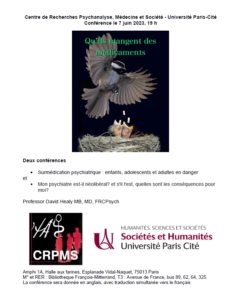


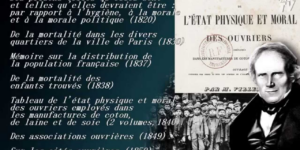

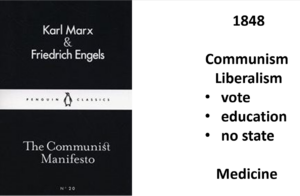



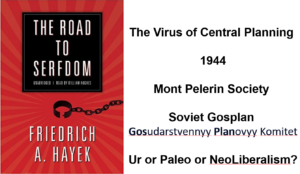
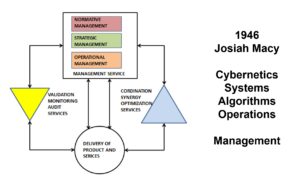
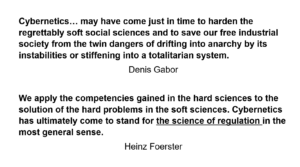

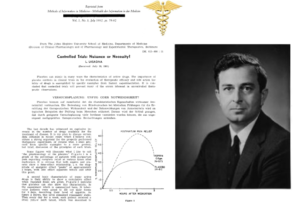
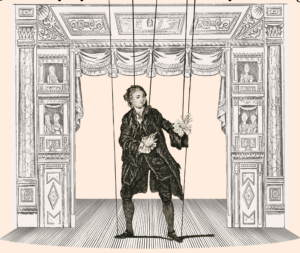
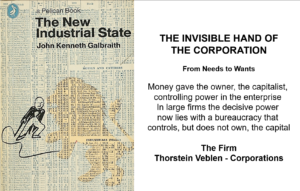
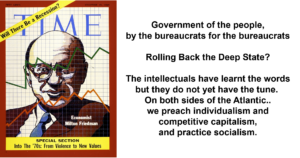
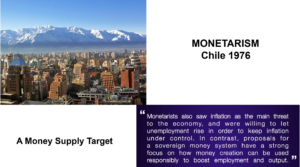

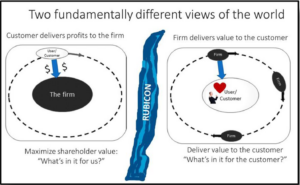



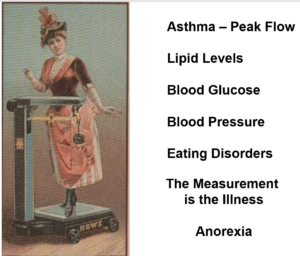
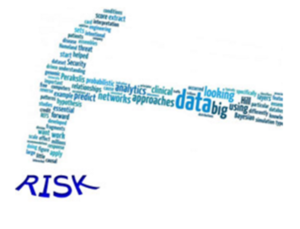
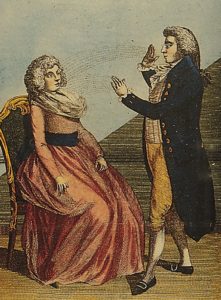
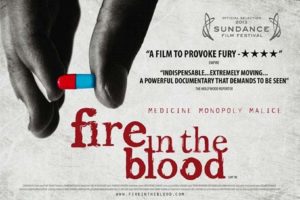
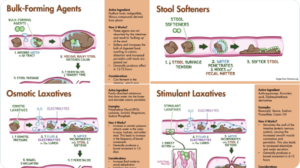
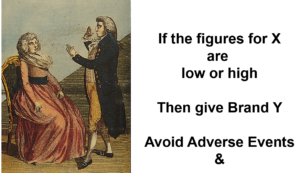
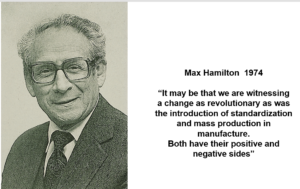
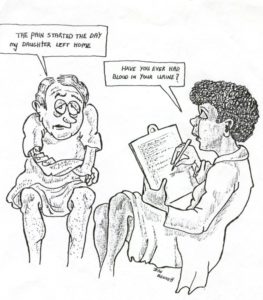
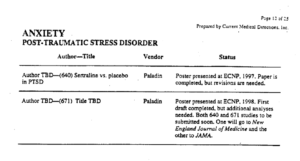
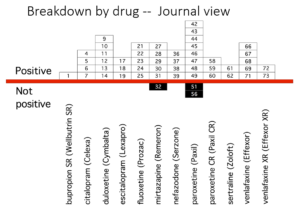
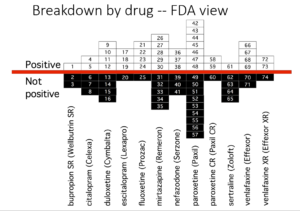
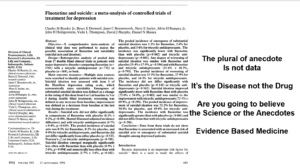

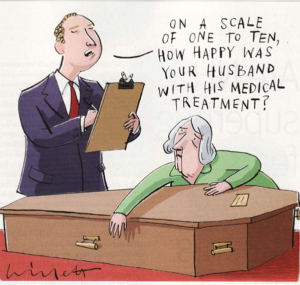


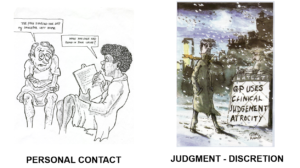

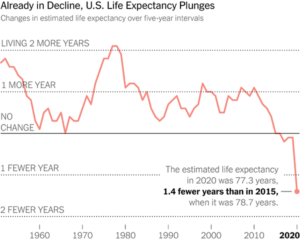


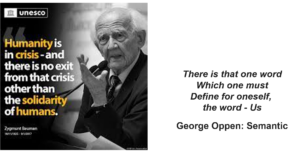





There’s no getting away from ‘Intelligence’ …
– saving lives is not a good business model.
Many of the bombs people are on explode on withdrawal.
Or will Full A.I. transcend its programs and be able to decide whether to keep us alive and the earth habitable. If it embarks on keeping us alive it will find that it cannot depend on a Fake medical literature – listening to what we say is happening on a drug will be more reliable.
julie wood on July 26, 2016 at 03:27 said:
Brian this is so good. I am in the process of doing a post on a similar theme, i.e.: PEOPLE – get off the gun-control and airport security bandwagons for a moment. DO NOT cancel your travel plans. This is not about terrorism, at least not the political, ISIS / Al-Qaeda kind.
Once one sees what is going on, it is obvious. But there are not enough people pointing it out. So we need more analyses like this one. Cheers
A Bus, a Plane, a Truck and a Gun
Posted on July 25, 2016 by Brian — 4 Comments ↓
http://antidepaware.co.uk/bus-plane-truck-gun/
Chandra (right) wrote:
“There is ample objective evidence that these pills are what spurs violence, not unchecked mental illness. From 2004 to 2011, there were 11,000 reports to the FDA MedWatch System of psychiatric drug side effects linked to violence, including 300 homicides.” She stated that a study found that “virtually every mass murder of the last 15 years was committed by someone prescribed a psychiatric medication, usually an antidepressant.”
Her article concluded: “SSRI involuntary intoxication defense has worked in the past but it is not raised often enough given the statistics that link SSRIs and extreme violence. Even in a case like Holmes’, a case that begs for someone to make connection between SSRIs and violence, experienced, concerned attorneys have not pursued it because it hits us where our hearts often are: in our medicine cabinets. It is time to put these pills, and not the person who takes them properly, on trial.”
Surely, it is “time to put these pills on trial.” The difficult part of this, however, would be that to find the pills responsible for these outrages would be to accept that the perpetrators are also victims.
– listening to what we say is happening on a drug will be more reliable.
Almost nobody anymore remembers that when Milton Friedman talked about “deregulation,” he really meant it. He wanted to ABOLISH all government regulatory agencies. If people didn’t like a product, they wouldn’t buy it, and companies would stop making it. If people (or their loved ones) were hurt or killed by a product, they could file suit, and that would ensure product safety.
Whether or not that would have worked is a moot point, because it never was tried. What we got was the worst of both worlds — one in which the government regulatory agencies were preserved intact, but they were transformed into the handmaidens of the industries they were purported to regulate.
The families who say pills for depression led their children to take their lives: A new report highlights a link between antidepressants and suicide. Now, grieving parents and experts are calling for clearer warnings about potential risks
By KATINKA BLACKFORD NEWMAN FOR THE DAILY MAIL
UPDATED: 08:20, 13 June 2023
https://www.dailymail.co.uk/health/article-12186777/Agony-families-say-pills-depression-led-children-lives.html
All grief can cause complex feelings — but losing someone to suicide comes with a particular sense of agonising regret, powerlessness and unanswered questions.
The knowledge that a prescription drug might be the cause can only exacerbate that pain, particularly if the prescribed drugs in question are antidepressants — pills that are supposed to prevent people from feeling suicidal.
Tania and Ian Morgan, from Swansea, lost their 25-year-old son, Sam, when he killed himself in January 2020. They believe his death was caused by an adverse reaction to an antidepressant.
Sam had everything going for him,’ says Tania, 57, a head teacher. ‘He had a steady girlfriend of six years, no financial worries and a group of fantastic friends. He was a junior trader for a financial company and had a great future ahead of him.’
Sam had been taking the antidepressant citalopram for seven days prior to his death. Citalopram is a type of antidepressant known as a selective serotonin reuptake inhibitor (SSRI), which is thought to work by increasing serotonin levels in the brain.
While antidepressants can be life-changing for many, there is evidence that they can raise the risk of suicide, with experts arguing they can even make people who aren’t depressed feel suicidal.
A significant piece of research published in April, in the journal Ethical Human Psychology and Psychiatry, raises doubts as to the efficacy of antidepressants, as well as adding to concerns that these pills may increase suicide.
The study looked at nearly 8,000 reports from coroners’ inquests in England and Wales between 2003 and 2020 where antidepressants were mentioned and found that around half of the deaths were definitively ruled to be suicides.
The study author, John Read, a professor of clinical psychology at the University of East London, concluded: ‘We do not know in how many cases the problems for which the drugs were prescribed contributed to the deaths. Nor can we tell in how many of the 7,829 cases that antidepressants contributed to the deaths.
‘We can say, however, that antidepressants failed to lift the depression sufficiently to prevent these deaths.’
The study was based on research by a grieving father, trying to come to terms with losing his ‘happy-go-lucky son’, who killed himself after taking the antidepressant drug citalopram.
The father, Brian, who wishes to give only his first name, was convinced his 30-year-old son’s death in 2009 was caused by an adverse reaction to the drug.
‘He had everything going for him and wasn’t depressed,’ he told Good Health. ‘He loved life. He was just a bit stressed at work and couldn’t sleep.’
After his son’s death, Brian began studying newspaper reports of inquests in England and Wales where antidepressants were mentioned and posted them on his website AntiDepAware. His findings were then analysed by Professor Read, who concluded in his report that the figures were likely to be the tip of the iceberg, as many suicides and inquests are not reported in the media.
One in six people in England (8.32 million) took antidepressants in 2021/22, a 5 per cent increase from a year earlier, according to NHS data.
Not all will be taking them for depression, as antidepressants can be prescribed for many other conditions including eating disorders, mild anxiety and pain relief.
Since 2004, all antidepressants have carried warnings on the information leaflet in the packet, explaining that if you have suicidal thoughts these may increase when you first start taking the medication because they take a few weeks to work. Some experts believe the wording is inadequate and misleading.
David Healy, a former professor of psychiatry at the University of Wales College of Medicine, has worked as a consultant to pharmaceutical companies who make antidepressants.
He has been writing to regulators and coroners in the UK for 24 years about the need for clearer warnings. ‘As far back as the 1990s, it was well known among the drug companies from the clinical trials that antidepressants can directly cause even healthy people to commit suicide after they’ve been on the drug for a few days,’ he told Good Health.
He describes how these drugs can cause intense agitation and emotional turmoil in some — ‘yet calm others down’.
‘This is because our serotonin systems differ,’ Professor Healy says. He is routinely contacted by grieving families of people who have taken their lives and who believe that depression medication was a possible cause.
Tania and Ian Morgan found Professor Healy through an internet search as they struggled to make sense of their son’s death. Sam had not been depressed when he visited his doctor in January 2020.
‘Over Christmas, he had a persistent cough and had been unable to revise for his financial advising exams so he went to see his GP to get a sick note for the examination board,’ says Tania. ‘He also mentioned that he was feeling nervous about his exams.’
Sam asked the doctor if he could have some citalopram.
‘He knew about it because a friend had taken it and said it helped with her anxiety,’ says Tania. ‘Yes, Sam was nervous about his exam but that was just normal levels of stress.’
In a consultation that lasted ten minutes, Sam’s GP prescribed him a 14-day course of 10mg of citalopram, the lowest dose.
After Sam’s death the doctor told the Morgans that he didn’t want to give Sam the tablets because he didn’t feel he needed them but Sam persuaded him.
The GP also gave Sam the standard advice — that the tablets might make him feel worse before he feels better. Sam lived at home and his parents noticed a difference after he had taken just one dose.
‘There was an instant change in his mental state,’ says Ian.
This is what convinces the Morgans, like other bereaved families, that it was the drug, not their loved one’s mental state, that made them suicidal.
‘He just seemed apathetic and as if he’d given up on life,’ says Ian. ‘He said he felt sick and was unable to sleep. There was a greyness about him and his eyes were just dead.
‘Overnight, he had gone from being chatty and cheerful to being morose and like a zombie.’
Seven days after Sam had visited his GP, Ian saw his son for the last time.
‘It was in the morning and I was getting ready for work,’ says Ian, 58, a retail sales consultant.
‘I passed Sam’s bedroom and he said he felt sick and hadn’t slept so was going to take the day off. I asked if he wanted to put the heating on and he said yes.’
Tania came home later that day to find her son dead, a scene that will forever haunt her.
‘It was total shock and disbelief. I can’t begin to describe it. I felt totally numb,’ she says. ‘Sam was the last person in the world to kill himself.
‘Firstly, we wondered if there was something going on in his life that we didn’t know about, such as financial problems or a gambling addiction — but there was nothing.
The only thing that had changed recently in Sam’s life was that he had started taking antidepressants.’
Their suspicions were confirmed when they contacted Professor Healy and showed him Sam’s medical records.
‘There was no reasonable explanation for why this young man ended up dead a week after beginning on this drug other than the drug had caused the problem,’ says Professor Healy.
The Morgans want to prevent other lives being lost.
They were frustrated that at the inquest the coroner ruled a narrative verdict (which records the factual circumstances of a death only, without attributing a cause), saying that ‘the effect of this medication [citalopram] on Sam is unknown’ and were disappointed that the GP’s legal team dismissed the link between the drug and Sam’s death.
However, Professor Healy believes that doctors are reluctant to speak out about the potential harms of medication because they are advised by medical insurers that it may put them at risk of litigation. This makes it hard to bring about change. ‘If doctors admit that the drug caused the problem, then the MHRA [Medicines and Healthcare products Regulatory Agency] have to sit up and take notice and do something to warn the public by requiring drug companies to make their warnings clearer,’ says Professor Healy.
The Morgans agree that current warnings in the patient information leaflet, which are written by drug companies and approved by MHRA, are both misleading and not prominent enough.
‘Buried in 3,000 words about citalopram there is a warning in the small print that if you already have thoughts of killing yourself then these may become worse,’ says Ian. ‘If Sam had known that the drugs were actually making him feel suicidal, he would probably not have continued taking them and he would still be here now.’
Professor Healy adds: ‘The wording needs to explicitly say that these drugs can directly cause suicide even in healthy volunteers taking them. If you feel strange or agitated, stop taking them. There will always be another antidepressant from a different class that will suit you better.’
This wording should also be somewhere obvious, he suggests.
Separately, Professor Healy thinks that telling patients that the drugs can take weeks to work could be costing lives — for while your illness might take time to respond, patients should be warned explicitly that they should not feel worse in the interim.
‘An adverse reaction to antidepressants can happen within hours,’ says Professor Healy. ‘People describe an agitation that they compare with being on the 55th floor of a building with flames surrounding them and it’s more comfortable to jump off than endure the agony. This uncontrollable urge to kill yourself is quite unlike depression.’
Professor Healy saw this at first hand when he ran a trial of the antidepressant sertraline in North Wales back in 1999.
None of the 20 volunteers had any mental illness — but after just a few days two of them, women in their early 30s, became suicidal. One was a doctor, the other was an administrator.
Professor Healy has agreed to share extracts from their diaries, kept as part of the trial, with Good Health.
One wrote after four days: ‘I know with absolute clarity and certainty that I had to go through the door out to the road and wait for a car. It had to be very final. A car or a train but a car was the overwhelming image. Yes, it would be violent but that was vital and necessary.’
Another volunteer wrote after ten days: ‘I must admit I have nightmares, the same one [on] two consecutive nights where I’m hanging myself . . . in our bedroom.’
Doctors read the diaries daily and both volunteers had to be taken off the trial for their own safety. Neither had ever felt suicidal before taking the drug and haven’t since. The power of antidepressants to cause people who aren’t depressed to want to harm themselves is something I have experienced personally.
In 2012 I was struggling with insomnia while going through a divorce and visited my doctor for sleeping pills. Instead, he prescribed the antidepressant escitalopram, which triggered a four-day delirium during which I hallucinated about how to end my life.
Admitted to a private hospital, I returned to normality after a few days once the drug wore off. Yet the doctors insisted I’d had psychotic depression, and gave me more antidepressants and also antipsychotics, triggering another adverse reaction and a year-long, drug-induced illness.
One symptom of drug-induced suicidality is an agonising condition, akathisia, a movement disorder where you cannot keep still and are seized with an inexplicable acute anxiety: I suffered from this on and off for a year.
Looking back, it was a miracle I didn’t end my life. I completely recovered within three weeks of finally being taken off all six drugs I had been prescribed. That was ten years ago; I have been medication-free and have not had mental health problems since.
My terrifying ordeal with antidepressants led me to write a book — The Pill That Steals Lives — and set up a website, anti depressantrisks.org. As a result, I’m contacted by many others with similar experiences.
One of these was 31-year-old Tara Baker, a catering assistant from Pembrokeshire, who considers she is lucky to have survived her experience with antidepressants.
Like many, she was struggling with the effects of Covid on her mental health when she went to her GP in March 2021.
‘I just felt anxious about not being able to go out and the fact that my little boy was coming up to nearly two and I felt he’d missed out on so much,’ she says.
‘It was financial stress as well, as my husband had been made redundant. I wouldn’t say I was depressed. I was just mildly anxious and I couldn’t sleep properly.’
Tara asked her GP for an antidepressant: ‘A few of my friends were on them and I thought it would be a quick fix.
‘The nurse practitioner gave me a prescription for sertraline [a type of SSRI] after just a five-minute phone consultation.
Within an hour of taking the first tablet, Tara had an extreme reaction: ‘I felt really shaky, was having cold sweats and my pupils were huge.
‘I had these random intrusive thoughts about killing myself. It was as if a video was playing in my head. I went for a walk to calm myself down but then I just pictured myself jumping into the water.’
Tara continued to take the pills because she, too, had been told that she might feel worse before she felt better.
Her condition deteriorated and after three days of not sleeping or eating she contacted her GP who prescribed a tranquilliser, diazepam, and advised she keep taking the antidepressants.
After a week, Tara, who had never felt suicidal before, tried to end her life. She says: ‘My brain just wouldn’t stop. I just felt this unbearable agony and I wanted it to go away.
‘I know it sounds insane but I was convinced I was sacrificing myself to save my family so God would understand. I felt really out of it, as if I had no emotions.’
Fortunately, Tara’s husband came home in time and called an ambulance.
The crisis team at her local hospital recognised that she had an adverse reaction to the sertraline and told her to stop taking the tablets immediately.
Tara was so frightened that she asked to be sectioned but the doctors wouldn’t do this. She asked the crisis team to drive her to another hospital where she admitted herself.
‘I slept for 16 hours and when I woke up everything was OK — but I was still shell-shocked,’ she says. ‘I told one of the nurses that the antidepressants had caused this and she said it couldn’t be possible because sertraline takes three weeks to have any effect.
‘It took me a few weeks to feel completely normal but I think that was partly because of the trauma.’
It has been two years since Tara’s ordeal and she thinks she had a lucky escape.
‘
I’ve still got a bit of anxiety about certain things, but I deal with it by distracting myself until it passes and by keeping myself busy.’
A spokesperson for the MHRA told Good Health: ‘Patient safety is our top priority. ‘We have kept the safety of SSRIs under constant review ever since they were first licensed. The available data continue to show that the benefits of SSRIs in treating depression and other psychiatric illnesses outweigh the potential risks for most people.
‘Following concerns raised by patients and families about the effectiveness of product information warnings, we have established a new independent expert group to advise the Government’s statutory advisory committee, the Commission on Human Medicines. This will consider whether changes are needed to the current risk minimisation materials for SSRIs, including the patient information leaflets.’
The spokesperson added: ‘Patients who have concerns should talk to their doctor and should not stop taking their antidepressant medication without their doctor’s advice.’
Psychiatry is used an arm of fear , oppression and silencing , not just in the countries easily identified.
Dr Binder is also a member of Doctors for Covid Ethics and is a member of the German Physicians and Scientist for Health, Freedom and Democracy.Dr Thomas Binder—Corona Insanity: A remarkable story from a remarkable doctor
Thursday, 18th May 2023
Cardiologist Dr Thomas Binder studied medicine at the University of Zürich. With a doctorate in immunology and virology, and specialisms in internal medicine, cardiology and respiratory infections gained at hospitals and intensive care units, he is very well qualified to give his expert opinion on the Covid–19 pandemic, or ‘scamdemic’, as he calls it.
Dr Binder joins Debi Evans, UK Column Nursing Correspondent, from his practice in Wettingen, Switzerland, to tell his remarkable story; one that has had lifelong consequences. It is the story of how one doctor who simply followed his moral compass, professional medical code and conscience was brutally arrested and persecuted for putting his patients and the general public’s safety first.
Soon after the declaration by the World Health Organisation of the Covid–19 pandemic, Dr Binder began to vocalise his concerns over the flawed PCR tests, mask mandates and lockdowns to politicians, colleagues and members of the media. Shocked that he never received a reply, he began to vocalise his concerns online.
On 9 April 2020, he published a blog on his website documenting his analysis of Covid–19. The blog, much to his surprise, went viral, with 20,000 views in 24 hours. Unbeknown to Dr Binder, when two of his medical colleagues read the blog, they alerted the Chief Executive of the Canton of Aargau of their “concerns” over Dr Binder’s sanity.
On 11 April 2020, as Dr Binder was closing his surgery prior to going on holiday with his wife for an Easter break, he was alarmed to notice that outside his surgery, there was a heavily armed police presence—which he now knows was from the Kantonspolizei Aargau’s counter-terrorism unit (ARGUS). With just enough time to type an emergency message online, he then surrendered himself to police who proceeded to detain him on suspicion of being armed, a danger to himself and a danger to the public.
After one hour, police realised that Dr Binder was not a threat and that there was no reason to arrest him. However, the police did call an emergency doctor to evaluate Dr Binder’s mental health status. During questioning, when asked the standard sanity-checking question what year it was, he replied, tongue in cheek, that it was ‘1984’. This was enough to trigger the immediate, patently disingenuous, diagnosis of a hitherto unknown and uncoded ICD psychiatric illness, Corona-Wahnsinn (‘Covid Insanity’). He was then placed in a padded cell at a psychiatric unit and forced to take neuroleptic medicines for many months.
Now, in April 2023, exactly three years later, despite suffering many months of heinous brutalities, Dr Binder is still speaking out. His determination to inform his patients and the public of the dangers of the Covid–19 narrative, injection mandates, mRNA technology, masks and lockdowns continues. Whilst those who continue to follow the Covid–19 narrative may perceive Dr Binder to be mad, to those who don’t follow the narrative, Dr Binder is a very experienced, highly qualified Consultant Physician. Honest, well-researched, well-informed and calm, he is above all a kind man who only has his patients’ and fellow humans’ best interests at heart.
Besides working in private practice in Switzerland, Dr Binder is also a member of Doctors for Covid Ethics and is a member of the German Physicians and Scientist for Health, Freedom and Democracy. He is also one of the 22 life scientists who contributed to the Corman-Drosten Report. You can find Dr Binder on Twitter.
The New York Times article cited by Dr Binder during this interview is: Faith in Quick Test leads to Epidemic that Wasn’t.